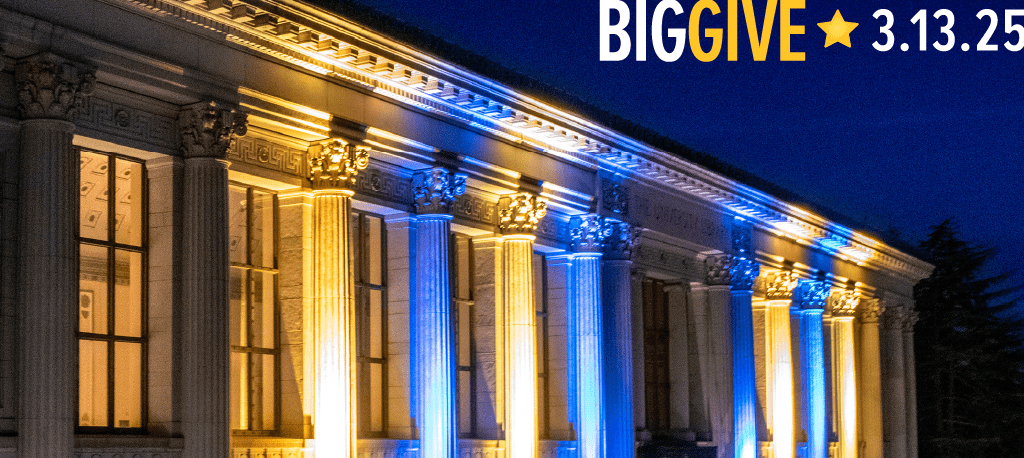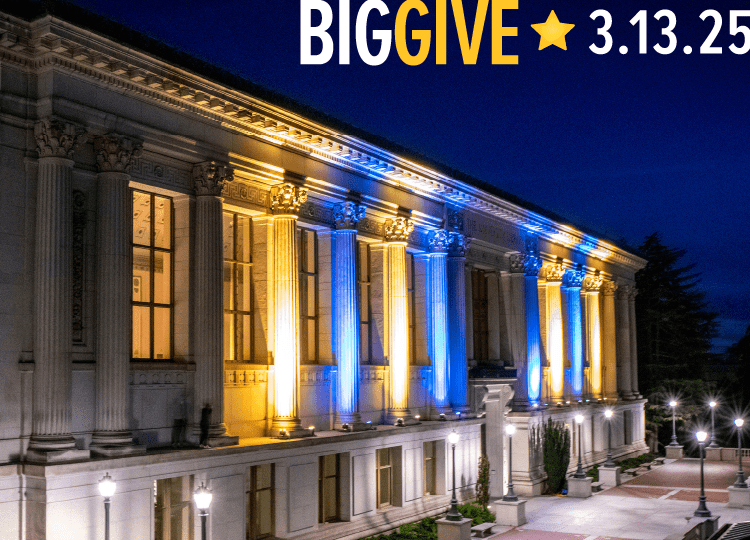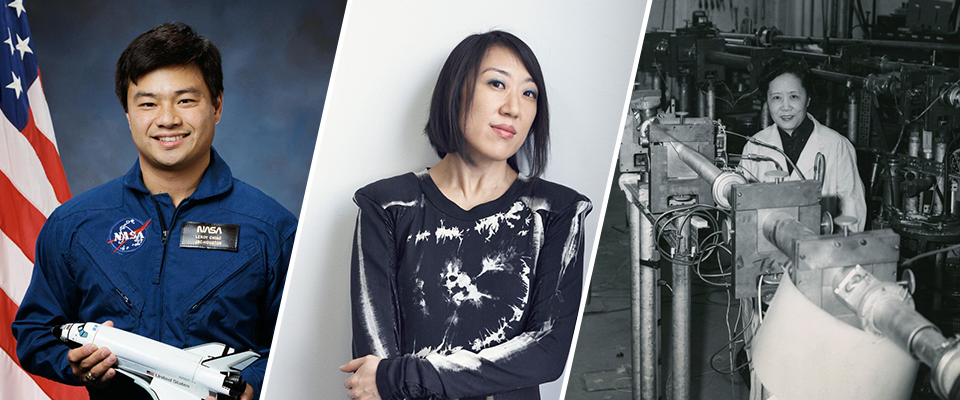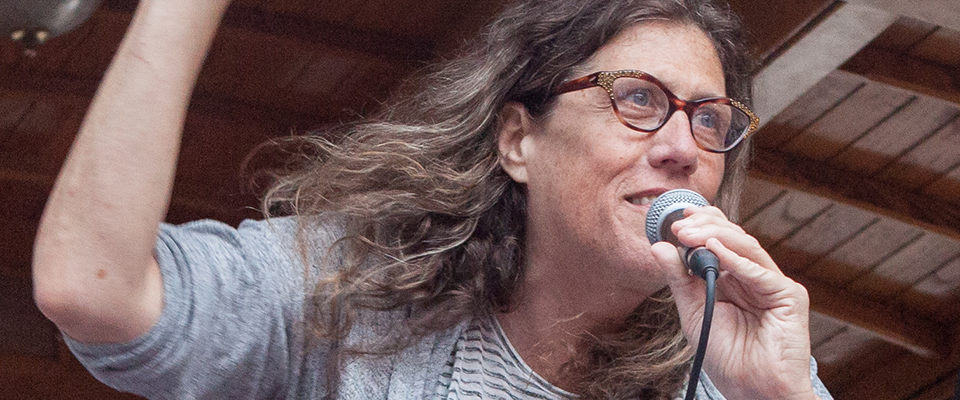In May we celebrate Asian American and Pacific Islander Heritage Month to honor the history and culture of Asian Americans and Pacific Islanders in our country. At Cal, we are extremely lucky to have had our legacy of service and achievement carried on by AAPI alumni who have found success in politics, the arts, STEM, business, and many other fields. During this month of celebration, we would like to recognize a few of the many Asian American and Pacific Islander alumni who have shaped communities and blazed the path for future generations.
Dalip Singh Saund M.S. ’22, Ph.D. ’24

Saund was born and raised in Chhajjalwaddi in the province of Punjab, India in 1899, when the area was still under British control. While Saund’s parents never obtained an education, Saund’s own life centered around education. Because there was a lack of public schools in the area, Saund’s father and uncles opened a one-room schoolhouse to provide him with an education.1 When Saund turned eight, his parents sent him to a boarding school 16 miles away, near the border of what is now Pakistan.
From there, Saund went on to attend the University of Punjab, where he earned his bachelor’s in mathematics in 1919. During his time as a student, Saund supported Mohandas Gandhi’s movement for an independent India and studied the words of President Woodrow Wilson and Abraham Lincoln, which he said changed “the entire course of [his] life.”2 After graduating, Saund had plans to learn more about the fruit-canning business in America before taking this knowledge back home to start the canning industry in India.3 His trip to America—which took him from Bombay to England, from England to Ellis Island, and from Ellis Island to Berkeley—ultimately led him in a different direction.
At UC Berkeley, Saund resumed his studies in mathematics, enrolled in the agricultural school, and became involved in the local community. “Outside of the university atmosphere,” he recalled, “it was made quite evident that people from Asia—Japanese, Chinese, and Hindus—were not wanted.”4 Saund left Berkeley in 1924 for southern California, where he struggled to establish various farming ventures during the Great Depression. During this time, however, Saund remained active in local politics and regularly addressed local groups.5 Over time, he grew his circle of impact by first organizing efforts to pass a bill in Congress that would allow Indian immigrants to pursue naturalization.6 Saund himself finally became a US citizen in December 1949.7
Saund’s career took off after that. He was quickly elected to the Imperial County Democratic Central Committee and ran in the judicial election twice before finally earning his seat in 1952, beating the opposing candidate by a mere 13 votes. In 1954, Saund became the head of the Democratic Central Committee for Imperial County, and just one year later, he decided to campaign for a seat in the House of Representatives, representing California’s 29th District.
Voters, critics, and peers spent much time focusing heavily on Saund’s ethnicity and how it might affect his stance on policies and civil rights, but Saund was adamant in his desire to represent his district. “I am not so much concerned with India. I am concerned with my district right here in California,” he said.8 Saund ultimately won the election and ended up being re-elected twice. He was the first Sikh American, Asian American, Indian American, and member of a non-Abrahamic faith to be elected to Congress. Throughout Saund’s career, he was a fierce supporter of civil rights, including the 1957 Civil Rights bill, and voted in favor of several other civil rights legislations.
In 1962, Saund suffered a stroke that left him unable to walk or speak without assistance and lost the re-election by just 6% of the vote. Saund lived another ten years in the care of doctors and family before passing away after suffering a second stroke in 1973. The US House of Representatives held a memorial service for Saund after his passing and remembered him for his work and service.
Chien-Shiung Wu Ph.D. ’40

Born in China, Wu came to the United States in 1936 to pursue a graduate degree in physics at UC Berkeley. Wu completed her Ph.D. in 1940 and briefly taught at Smith College and Princeton.9 In 1944, Wu accepted a position at Columbia University in the Division of War Research, where she worked on the Manhattan Project.10
Wu stayed at Columbia University conducting research for many years and was eventually approached by two peers, Tsung Dao Lee and Chen Ning Yang, who wanted her assistance in devising an experiment to test the law of the conservation of parity.11 Wu, known for her meticulous work ethic and accurate experiments, set up an experiment at the National Bureau of Standards.12 Her work proved that the law of conservation of parity does not hold true in all cases.
While fundamental in the process of this discovery, Wu was overlooked when Lee and Yang were awarded the Nobel Prize for this discovery. Despite this oversight, Wu was still able to leave her mark in the world of science and is considered to be “one of the premier experimental physicists in the world.”13
Through the remainder of her career, Wu went on to become the first female president of the American Physical Society in 1975 and the first Chinese American to be elected into the US National Academy of Sciences.14
Maxine Hong Kingston ’62

Kingston was born in Stockton, California to first-generation Chinese immigrants. Her childhood would later influence her writing; she saw the struggles of assimilation first-hand as her parents navigated life in the United States and her mother told Kingston stories about her ancestors. Kingston became fascinated by these Chinese folk tales and was so moved by her mother’s stories about life as a woman in China that she wanted to write them all down.15
Kingston pursued her undergraduate education at UC Berkeley on a scholarship, first majoring in engineering before switching to English. While at Berkeley, she became the night editor for the Daily Californian and met her husband, Earll Kingston.16
After graduating, Kingston and her husband began teaching high school in Hayward, California, before ultimately deciding to relocate to Hawaii. Although Kingston continued to teach in Hawaii, she began to focus more seriously on writing and published her first book The Woman Warrior: Memoirs of a Girlhood Among Ghosts in 1976.17 The Woman Warrior went on to become nationally recognized, earning the Nation Book Critics Circle Award for Nonfiction in 1976 and was named one of the top ten nonfiction works of literature in the 1970s by TIME magazine.18
Her work was even recognized by two US presidents: In 1997, President Bill Clinton awarded her the National Humanities Medal, and President Barack Obama awarded her the 2013 Medal of Arts for her contribution to the national conversation on culture, race, and gender.
Kingston held teaching positions at the University of Hawaii and Eastern Michigan University before taking a teaching position at UC Berkeley in 1990.19 She is now senior lecturer emeritus at UC Berkeley and is still active in the UC Berkeley community.
Yuji Ichioka M.A. ’68

A Bay Area native, Ichioka was born in San Francisco in 1936. During his childhood, Ichioka and his family were incarcerated at the Topaz War Relocation Center after Franklin Roosevelt signed Executive Order 9066, which dictated the forced relocation and internment of thousands of Japanese Americans.
After he was released, Ichioka returned to the Bay Area to finish high school at Berkeley High and joined the US Army for three years. After returning from his army station in Germany, Ichioka relocated to Southern California to attend UCLA and graduated with a bachelor’s degree in history in 1962. Though Ichioka attended Columbia University for graduate school, he soon dropped out and started working with incarcerated youth in New York City.
In 1966, Ichioka voyaged to Japan to study its language and culture. Inspired from his experience abroad, Ichioka wanted to learn more about the Japanese immigrant experience in America, so he decided to pursue his master’s at Cal in Japanese history.
While attending UC Berkeley in the late 60s, Ichioka became an activist and founded the Asian American Political Alliance, a political organization that strove to unite all Asian Americans in fighting for political and social action. Ichioka is credited with coining the term “Asian American” in an effort to include and unite all Americans of Asian descent.20 After finishing graduate school at UC Berkeley, Ichioka returned to UCLA, where he helped found the Asian American Center, now the nation’s largest center for Asian American studies research.21 He also taught the first Asian American studies class at UCLA.22
Eni F. Faleomavaega Jr. LL.M. ’73

Eni Fa‘aua‘a Hunkin Faleomavaega Jr. was born on August 15, 1943 in Vailoatai Village, American Samoa. When Faleomavaega was growing up, his father served in the US Navy. The military sent their family to Hawaii via the cargo hold of an outdated ship, which Faleomavaega recalled being “like a dungeon. It was the most inhumane way of transporting human passengers.”23
Faleomavaega spent about half his life in Hawaii: he graduated from high school in northern Oahu and attended Church College for two years before moving to Utah to complete his bachelor’s in history and political science at Brigham Young University in 1966. Upon graduation, Faleomavaega joined the US Army and served a three-year tour in Vietnam before pursuing his juris doctorate at the University of Houston. He went on to accept a fellowship at Berkeley Law and earned his master’s in law in 1973.
Later that year, Faleomavaega moved to Washington, DC and began working with Paramount Chief A. U. Fuimaono, the first elected representative for American Samoa in DC.24 Faleomavaega’s role led him to testify before Congress, including the Interior and Insular Affairs Committee’s Subcommittee on Territorial and Insular Affairs, advocating for the representation and rights of American Samoans and Pacific Islanders.
In 1981, Faleomavaega returned to American Samoa and became the deputy attorney general. He moved “so [he] could feel the people’s pains and sufferings and so that [he] might be able to serve them with more meaningful purpose.”25 Faleomavaega certainly had the impact that he’d hoped for—and more. Four years later in 1985, he was elected lieutenant governor, and four years after that, he became a congressional delegate.
Faleomavaega centered his entire political career around championing for Pacific Islanders and only left his seat in the House in 2014 when he lost re-election. He finished second in the race and declared that he would continue his work with the young people in American Samoa, instead of those in Washington.26
On February 22, 2017, Faleomavaega passed away at home in Utah. Speaker of the House Nancy Pelosi said of Faleomavaega after his death, “Eni was a restless champion for the rights and advancement of his constituents. His life and leadership powerfully spotlighted the immense contributions of Americans from U.S. territories.”27
Ed (Edwin) Lee J.D. ’78

Lee was born into a working class family of Chinese immigrant parents in Seattle. Growing up in a public housing project, Lee often worked alongside his father cooking in a restaurant.28 Lee came face-to-face with racism at work in the form of irate customers.29 At school, Lee also encountered racist jokes.
Lee didn’t let these experiences deter him from furthering his education and went on to acquire his undergraduate degree from Bowdoin College, and several years later, his juris doctorate from Berkeley Law in 1978.30 By the end of his career and sadly his life, Lee had left behind a legacy and became an inspiration for Asian Americans.
At Berkeley Law, Lee’s political activism took root. He became an intern at the Asian Law Caucus and was active in helping improve living conditions for the Chinese community in San Francisco.31 By the time Lee was ready to graduate, he was already intertwined in SF politics, and spent several years working as the managing attorney for the San Francisco Asian Law Caucus and as a civil rights attorney before joining the city government.32
Lee held many different titles while working with the San Francisco city government. He was named San Francisco’s first Whistleblower Ordinance Investigator and served as director of Department of Public Works and director of the City Purchasing Department, among others.33 Over the course of his career, Lee served under four mayors before being appointed interim mayor in 2011 when Newsom was elected as lieutenant governor.34
At first, Lee was unsure about being mayor and hadn’t planned to run. After realizing what he could do for the city and the support system he had, particularly with the civic leaders in Chinatown, Lee went for it.35 In 2011, Lee won, making him San Francisco’s first Asian American mayor. He was re-elected in 2015 but was unable to finish his term due to a heart attack that took his life in 2017.36
Lee has certainly left his mark on San Francisco as well as Berkeley. When Lee was mayor, he would often recruit summer interns from UC Berkeley. He also worked with Berkeley’s seismology lab to develop an early earthquake warning system and the Institute of Transportation Studies to access the impact of self-driving cars. Lee passed away in December 2017 at the age of 65 after suffering cardiac arrest. Lee will always be remembered for his contagious “Go Bears” attitude.37
Steven Chu Ph.D. ’78

Growing up in a family filled with academic elites, Chu had lacked interest in school and was deemed the “academic black sheep” of the family.38 As a child, Chu preferred playing with model airplanes or partaking in sports to completing school assignments.39 However, in his senior year of high school, Chu’s interests shifted when he took advanced placement courses in physics and calculus.40
After discovering his new passion, Chu enrolled in Rochester University and four years later, in 1970, graduated with a bachelor’s of science in physics and an AB in mathematics.41 Deciding to continue his pursuit of theoretical physics, Chu then enrolled in a graduate program at UC Berkeley and served as a postdoctoral fellow from 1976 to 1978.42
Following his time at UC Berkeley, Chu joined Bell Laboratories and became head of the Quantum Electronics Research Department in 1983.43 While at Bell, Chu began his experimental work on the laser cooling and trapping of atoms, the subject of his 1997 Nobel Prize.44 In 1987, Chu left Bell and joined the faculty of Stanford University before returning to his alma mater, Berkeley, in 2004.45 At UC Berkeley, Chu taught physics and molecular and cell biology, and served as the director of the Lawrence Berkeley National Laboratory, where he focused on researching alternative energy sources.46
Four years later, Chu was selected by former President Obama to serve as the 12th US Secretary of Energy, making him the first-ever scientist to hold a Cabinet position.47 Chu is credited with helping the administration invest in clean energy, address climate change, and reduce dependence on foreign oil.48 Since stepping down, Chu has returned to Stanford and continues to serve on their faculty.49
Leroy Chiao ’83

A son of Chinese immigrants, Chiao was just eight years old in 1969 when he watched the Apollo 11 moon landing.50 It was in this moment that Chiao realized his dream of becoming an astronaut. Several years later, with this dream still in mind, Chiao enrolled at UC Berkeley to major in chemical engineering. Chiao describes getting his bachelor’s degree as “the single hardest thing I’ve done in my life.”51 Despite initial struggles, Chiao persevered and graduated from Berkeley in 1983. Chiao continued his education at UC Santa Barbara, where he earned his master’s and doctorate in chemical engineering.52
Once Chiao earned his Ph.D., he decided it was time to learn how to fly. He had the necessary degrees to become an astronaut but he needed more practical experience to pursue his dream, so he took out a loan and started flying lessons.53
After spending a few years working in the private sector, Chiao applied for a job at NASA in 1989. Chiao was picked out of thousands of applicants for an interview, which required him to stay in Houston for a week and pass an extensive medical exam. Four months after the interview, Chiao received a call from NASA with an official job offer, and four years later, Chiao was up in space.54
Chiao excelled at NASA. He went on four space missions, including Expedition 10, where he commanded the International Space Station over the course of six and a half months.55 He also became the first Asian American to complete a spacewalk, and went on to complete five more. Collectively, Chiao spent over 229 days in space and 36 hours on spacewalks.56 Now retired, Chiao works at OneOrbit, a company he co-founded in 2015 to help train and educate students about space.57 With children of his own, Chiao is very passionate about inspiring younger generations.58
Sehat Sutardja Ph.D. ’88

Sutardja was born in Indonesia to Chinese immigrants.60 After a trip to visit his brother, Pantas, who was living with their grandparents in Singapore, Sutardja discovered his passion for engineering while tinkering with a generator.61 Soon enough, Sutardja was playing with just about anything he could get his hands on. By the age of 13, he was a certified radio repair technician.62 Determined to learn as much as he could about engineering, Sutardja decided that he needed to move to the US. He made this a reality in 1980.63
After a brief stint at the University of San Francisco, Sutardja enrolled at Iowa State University, and graduated with his bachelor’s in electrical engineering in 1983. By the time he finished his undergraduate, Sutardja’s younger brother, Pantas, had moved to the US and enrolled at UC Berkeley, so Sutardja applied to UC Berkeley’s graduate engineering program.64
While at Berkeley, Sutardja met his wife Weili Dai. The two bonded over their shared passion for academics and spent their first date studying together in Sutardja’s office.65
Once Sutardja had finished his master’s and doctorate, he went on to work for several engineering companies before deciding to go into business with his wife and brother.66 In 1995, the three co-founded Marvell Technology Group, a semiconductor company that has since grown into a global force. Marvell Technology Group now brings in nearly $3 billion in revenue each year and can be found in computer, TVs, smart phones, and more.67
Sutardja was named Inventor of the Year in 2006 by the Silicon Valley Intellectual Property Law Association and has earned over 440 patents.68 In 2009, UC Berkeley named Sutardja Dai Hall after Sutardja, Pantas, and Weili to acknowledge their $20 million donation to the nano-fabrication laboratory (CITRIS) on UC Berkeley’s campus.69
Ravinder Singh Bhalla ’96
 First Sikh mayor of Hoboken, New Jersey; first turban-wearing Sikh politician elected a United States mayor
First Sikh mayor of Hoboken, New Jersey; first turban-wearing Sikh politician elected a United States mayor
Bhalla was born in New Jersey, where his parents owned and managed a street lamp company, for which Bhalla’s father invented the lamps himself.70 Bhalla’s studies ended up taking him far from home; he earned his bachelor’s from Cal in political psychology, went to the London School of Economics for his master’s in public administration and public policy, then moved to New Orleans to earn his juris doctorate from Tulane Law School.
Fresh out of law school, Bhalla returned home to settle down in Hoboken, New Jersey. He began his career at a small law firm, but Bhalla unexpectedly and rapidly earned national recognition for himself when he advocated for his constitutional and civil rights after guards at a detention center demanded he remove his turban before visiting a client. The New York Times wrote a piece on the incident, as well as Bhalla’s following campaign to change the federal government’s visitation policies.71
Bhalla continued his foray into politics when he met, befriended, and volunteered for US Senator Cory Booker’s mayoral campaign in 2000. Eight years later, Bhalla joined Booker in supporting Barack Obama’s presidential campaign. “After [Obama] won the Iowa caucus I shut down my law practice for a week and drove up with my brother to New Hampshire and spent a week knocking on doors in the middle of winter,” Bhalla said. “It was my first experience with grassroots politicking…And when [Obama] won, I said to myself, ‘If America is ready for its first Black president, maybe Hoboken is ready for a Sikh councilman.’”72
The next year, in 2009, Bhalla ran and was elected to the Hoboken City Council. He held his role for eight years before then-mayor Dawn Zimmer retired and endorsed Bhalla as her successor. Bhalla encountered intense racism over the course of his mayoral campaign. Posters featuring his face and warnings about terrorism appeared on cars around town, but Bhalla refused to let these actions deter him and continued to lead his campaign, focusing on his policies and values as opposed to his background. On Election Day in 2017, Bhalla was elected the 39th mayor of Hoboken, and the first Sikh mayor of the city.
Young Jean Lee ’96

Young Jean Lee immigrated to America from Korea in 1976, when she was just two years old.73 Her father, James, wanted to earn a doctorate in chemical engineering, so the family moved to Pullman, Washington.74 Lee disengaged at her public school—until she moved to UC Berkeley to study English, where she was able to work with renowned Shakespeare scholars like Stephen Greenblatt and Stephen Booth.75
Immediately after completing her bachelor’s degree, Lee entered UC Berkeley’s graduate program in English, where she began writing a dissertation on Shakespeare’s King Lear. However, she soon realized this work no longer excited her, discovering a new pursuit: playwriting. Studying Shakespeare’s plays had been her way of accessing plays, short of writing them herself.76
Four years into her Ph.D. program, Lee quit and moved with her husband to New Haven, where she discovered the works of Jeffrey M. Jones through the Yale School of Drama. Lee emailed Jones for his advice, which led her to pursuing an MFA from Brooklyn College in playwriting.
It was there that Lee was finally able to dive further into the world of playwriting and theater, connecting with more playwrights and others in the industry. She began writing her own plays, like The Appeal in 2004, and even formed her own theater company in 2003. Many of Lee’s works have been “too crazy,” in her words, to make it on Broadway, and even Straight White Men, the play that did ultimately have its own Broadway run, ran the risk of being highly controversial.77
As an Asian American woman, Lee is grateful for the support that people have given her, but also recognizes the progress that has yet to be made. “So much of the reason why people are happy for me when I’m successful is because I’m like a groundbreaker as an Asian American female,” Lee has shared. “…people like me have been excluded for such a long time. It doesn’t feel right that I should be the first one.”78
Viet Thanh Nguyen ’92, Ph.D. ’97

After moving to the US in 1975 as a refugee from Vietnam, Nguyen’s family moved from a camp in Pennsylvania for Vietnamese refugees to San Jose, California. Nguyen’s family opened one of the first Vietnamese grocery stores in the city.80 After graduating from high school, Nguyen first attended both UC Riverside and UCLA before he transferred to UC Berkeley, which ultimately was the best fit. At Cal, he earned his bachelor’s in English and ethnic studies and then went on to pursue his Ph.D. in English.
After earning his Ph.D., Nguyen was offered a position teaching in both the English and American Studies and Ethnicity Departments at the University of Southern California. Over the years Nguyen wrote many short stories, but his novel The Sympathizer, he claims, is the one that brought a new sensation to him. Nguyen said, “I experienced, for the first time, the most extraordinary joy in writing. After having suffered for more than a decade writing a short-story collection where every sentence was either labour or punishment, now nearly every sentence was fun, even when the subject matter was bleak.”81 Not surprisingly, this novel was a New York Times bestseller, and won the 2016 Pulitzer Prize for Fiction.
Contributed to by Rachel Ermatinger, Courtney Cheng, and Kiley Treacy
Resources:
Image credits in order of profile: Uncredited. Published by the United States Information Service., Smithsonian Institution Archives., David Shankbone, courtesy of Alchetron.com, Bradley H. Slade, Gene Hwang, Official White House Photo by Pete Souza, NASA, Sikarin Thanachaiary, courtesy of Brown Girl Magazine, Blaine Davis, courtesy of vietnguyen.info.




















